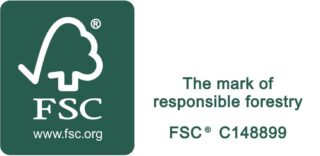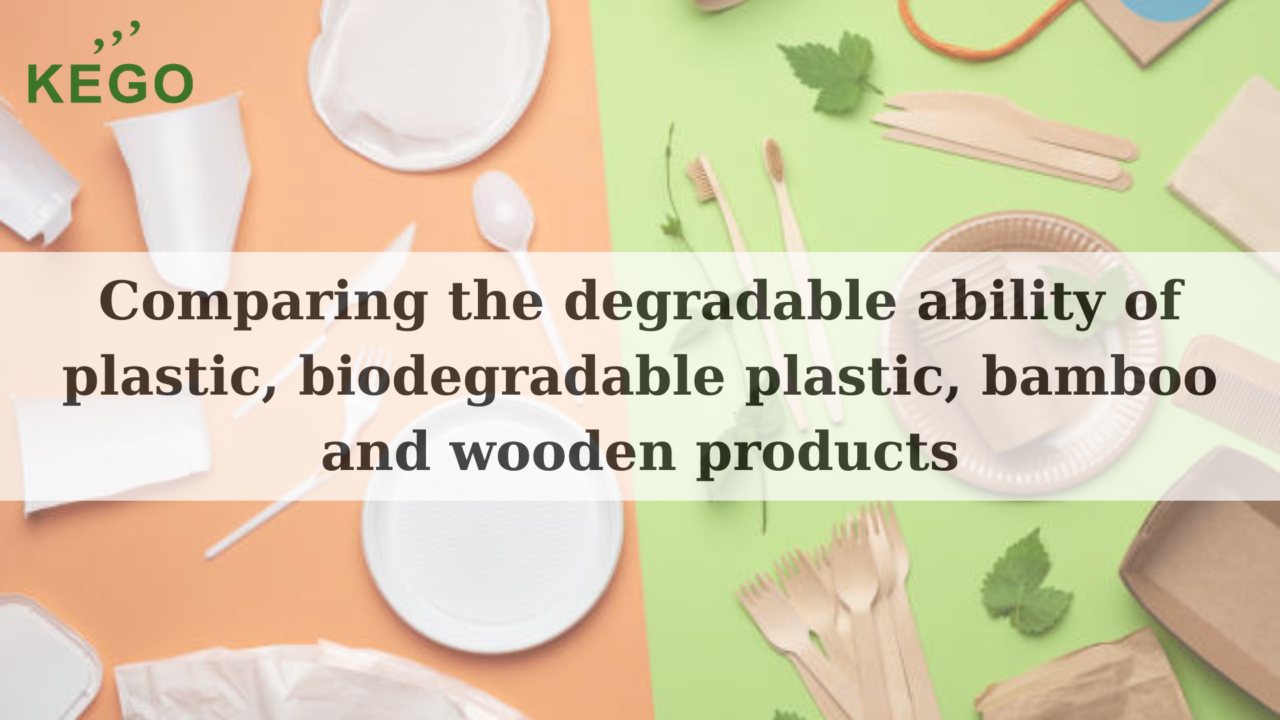
With the rising interest in switching to non-plastic alternatives such as biodegradable and compostable, people still have concerns about the degradable ability of these eco-friendly materials compared to traditional plastic. So, here, this article will give you some major information about this matter by comparing some popular materials: plastic, biodegradable plastic, bamboo, and wood
1. Plastic: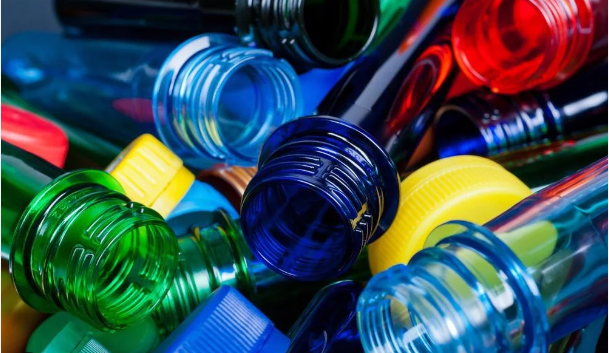
First of all, plastic is a highly durable material that cannot be broken down by natural processes. Some factors that influence plastic decomposition include temperature, humidity, and exposure to sunlight. Generally, plastic breaks down faster in a warm and wet environment. Furthermore, it is important to notice that even when plastic does decompose, it does not disappear entirely. Instead, it breaks down into smaller pieces over time which are called microplastics. Microplastics can persist in the environment for centuries, and they will harm human health by being ingested into the food chain.
Depending on the material, structure of the type, and the conditions it’s exposed to, plastic can decompose anywhere from 10 to 1000 years. For example, while a plastic cup needs 20 years to decay, a plastic toothbrush can take up to 500 years. Some plastic materials, like PVC, can be durable for 1000 years.
2. Biodegradable plastic: 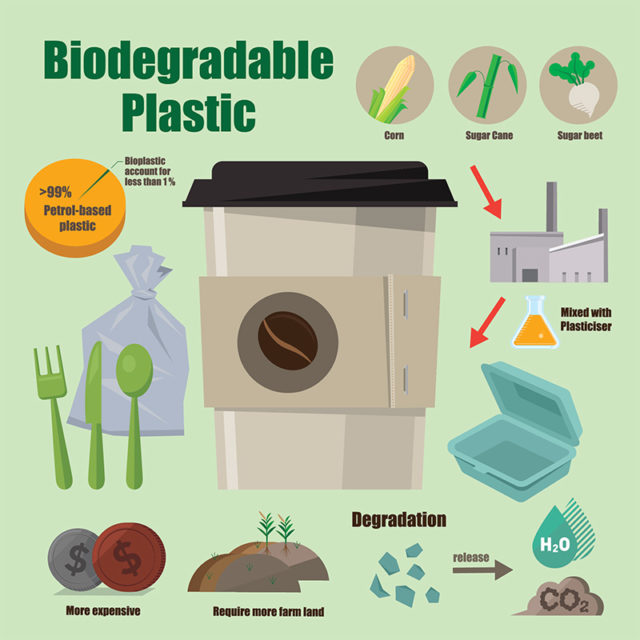
Biodegradable plastic can be broken down completely into water, carbon dioxide, and compost by microorganisms under the right conditions. Though it cannot be broken down by biological processes, it can decompose under specific conditions, such as temperature and humidity levels. Being designed to decay faster than traditional plastic, some biodegradable plastics can degrade within weeks or months. However, the amount of time it takes for biodegradable plastic to decay can vary depending on several factors, some other types of biodegradable plastic may take many years to decompose. Besides, because it can release harmful chemicals when broken down, biodegradable plastic can still cause harm to the environment.
3. Bamboo:
Bamboo is not only 100% biodegradable which means it will decay by natural organisms and environmental processes without harming the environment, but also compostable. After usage, unlike plastic, bamboo decomposes naturally and can be broken down into nutrient–rich compost which will nourish plants and enrich the soil.
The length of time it takes to fully biodegrade depends on the kind of product, as well as the environment it is in. Bamboo is compostable but also needs to be sent to an industrial composting facility since it is unlikely to break down quickly in a home compost. For instance, a bamboo toothbrush in a home composting bin takes about 4 to 6 months to fully decompose, but it needs 5 to 10 years to biodegrade when just being left outside.
4. Wood:
Like bamboo, wood is totally biodegradable and also compostable as well. However, the process of decaying wood is much more complicated. In general, wood degradation is not the same as wood decomposition. On the one hand, there are three primary sources of wood degradation which are fungi, insects, and weathering. The organisms that decay wood have four requirements: moisture, oxygen, temperature, and the wood itself. On the other hand, the decomposition of wood which is caused mainly by fungi has three main types, often referred to as brown rot, white rot, and soft rot. Decayed wood may suffer a loss of strength, and have changes in color, smell, and water content. What’s more, decomposition of wood is an important part of the carbon cycle of nature.
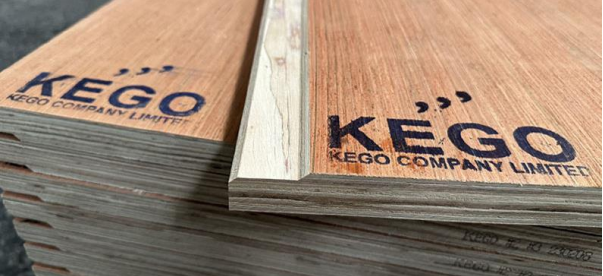
With each type of wood and in each condition, the wooden products can last and can be used for different length of time. While cheap furniture plywood can be gone in a few years, high-quality wood for buildings can endure for centuries if it is installed within a protected environment.
So as demonstrated, there are many amazing alternatives for plastic that can biodegrade naturally without harming the environment. They are safe for the environment and their use should be encouraged.

